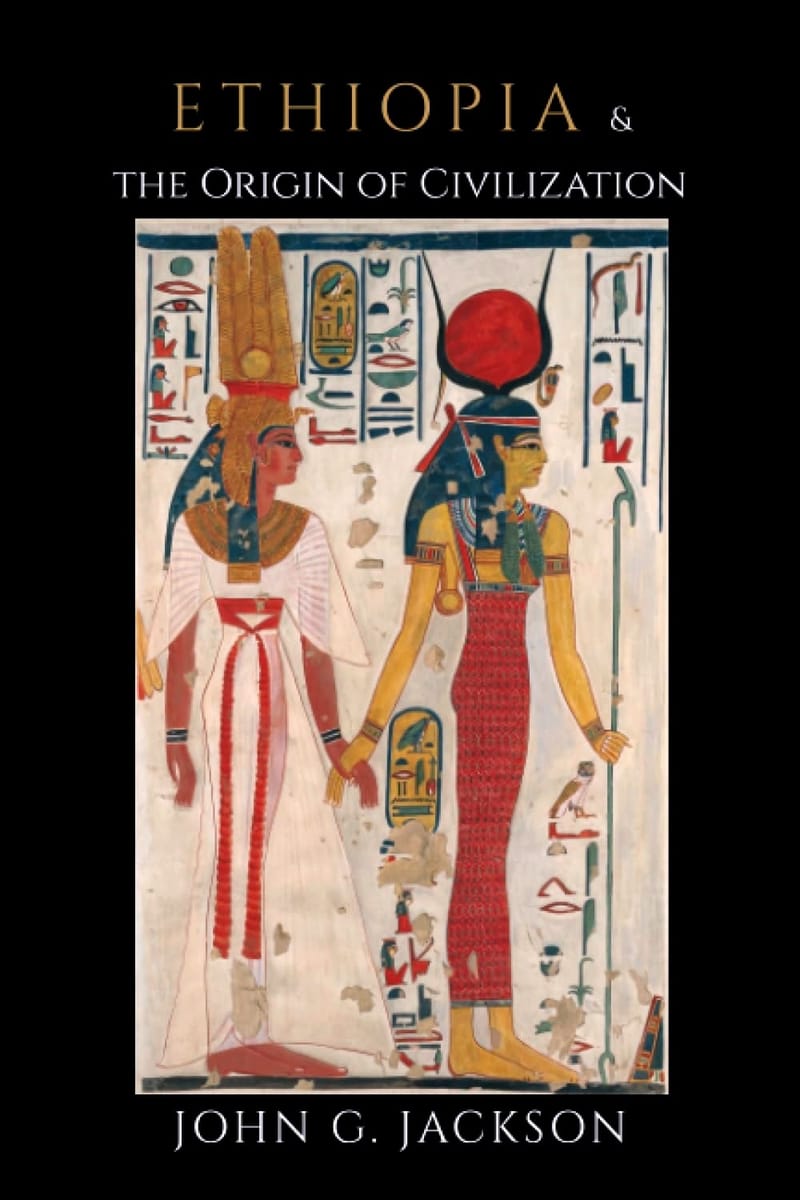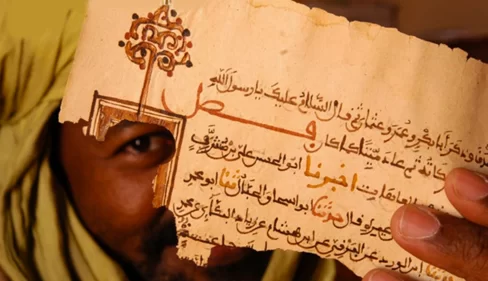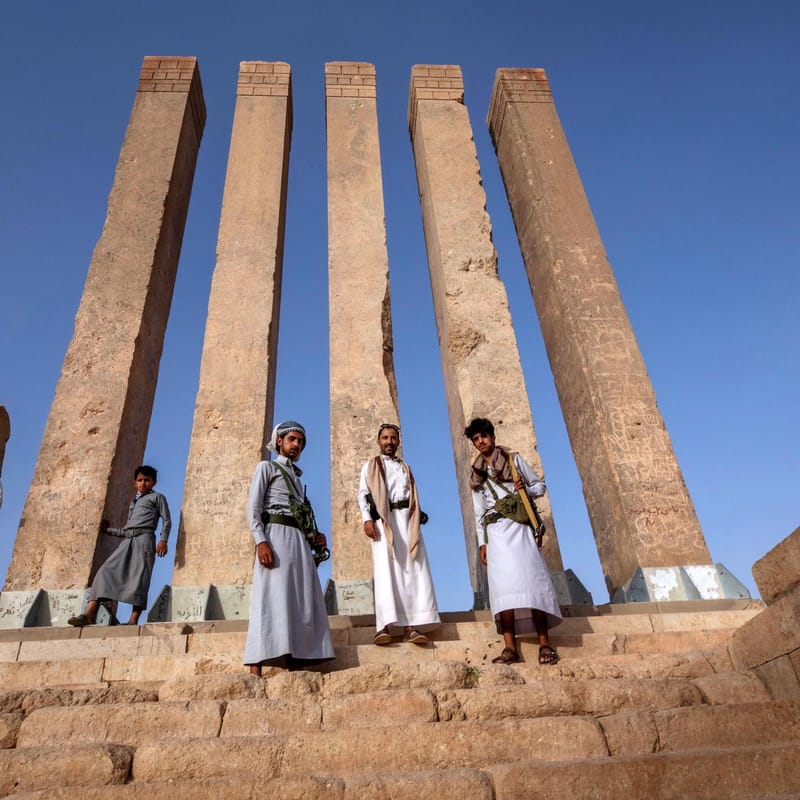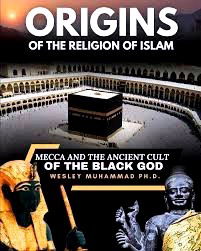John G. Jackson, Ethiopia and the Origin of Civilization
A persistent and deliberate confusion among mainstream historians has been instrumentalized to bolster up preconceptions about the ancient civilizations of Egypt, Babylon, and India, known as the “triple system of white man civilization”. Yet, Ethiopia stands as the corner stone when it comes to casting the net on ancient civilizations and understanding history without dogma. Herodotus made no mistake when he singled out the Ethiopians as a single race dwelling along the shores of the southern oceans from India to the Pillars of Hercules. The name "Cushites" is invariably synonymous with "Ethiopians". In Biblical genealogies as written in Chronicles 1:8 and Genesis 10, we are well aware that Cush (Ethiopia), Mizraim (Egypt), Put (ancient name for Libya), and Canaan are all brothers as sons of Ham. And Nimrod (Babylonia) is a descendant or sprang up from Cush. Therefore, Ethiopians or Cushites, Egyptians, and Babylonians are all brothers. Now, the historical pitfall is that many mistake the name Ethiopia as geographically confined or limited to Abyssinia in eastern Africa according to modern geography. Not so much so with ancient maps and history. Ancient Ethiopia or Cush extended well beyond African shores and Asia. For instance, in the book of Esther 8:9, king Xerxes of Persia and Media ruled over 127 provinces stretching from India to Cush or Ethiopia. India and Ethiopia were part of the Persian empire. The whole region from India to Egypt was called by the name Ethiopia. Classical historians made mention of Eastern and Western Ethiopians. Herodotus wrote that, both the Western Ethiopians who lived in Africa, and Eastern Ethiopians who dwell in India, were all black in complexion, but that the Africans had curly hair, while the Indians were straight-haired. Homer and Herodotus called Ethiopians all the peoples of Egypt, Sudan, Arabia, Palestine, India, and Western Asia. How big was Ethiopian military might? In 2 Chronicles 14, we find king Zerah the Ethiopian or Cushite, marching out against the king of Judah with an army of a million troops and three hundred chariots. To prevent from the narrow mindset reading of history, Stephanus of Byzantium wrote: “Ethiopia was the first established country of earth; and the Ethiopians were the first who introduced the worship of the gods, and who established laws.” Interestingly enough, the ancient gods of India are shown wearing Ethiopian crowns on their heads. Greek tradition reminds us that, Zeus, the king of the Grecian gods, so much cherished the friendship of the Ethiopians that he would travel to their country twice a year to attend banquets. It is Godfrey Higgins who noticed that “all the gods and goddesses of Greece were Black!” No need to say that all the gods of ancient Rome were all Black deities and Black Madonas ! And Moses sojourned in the desert among the Midianites and got married to Zipporah the daughter of Jethro. Jethro was a priest and shepherd from Midian. The Midianites are members of an Ethiopian tribe. Ethiopians, Egyptians, and Babylonians were the first brothers known as builders of world empires and equally famous because they brought us the gods or their ancestral worship by way of doing religion to seek God. The Bible is prophecy written as history. In God’s reading room, the end is the beginning, and the beginning is the end. "Nature abhors a vacuum". Christianism does not need to borrow from the so-called "Pagan religions". The beginning was a shadow rehearsal for what was coming at the end. Most of these Black ancient gods have this in common: born of a virgin. Slain commonly by crucifixion. They descended into hell. The black gods were forerunners of a pivotal historical world event of great magnitude. The ancient gods or better the ancient ancestral worship had just been foretelling the story of Jesus Christ the savior. The Black gods were regarded as crucified saviors who died to save mankind by being nailed to a cross or tied to a tree with arms outstretched. Among the most prominent crucified saviors, we find Osiris, Horus of Egypt, Khrishna of India, Mithra of Persia, Quetzalcoatl of Mexica, Adonis of Babylonia, and Attis of Phrygia. The Sumerians were the earliest rulers of ancient Mesopotamia, long before the Akkadians, Babylonians, Assyrians, and the Chaldeans. Assyro-Babylonian tablets designated the Sumerians as the Black-heads or Black-faced rulers. They are displayed on historical monuments as beardless and with shaven heads, to distinguish them from the semitic Babylonians depicted with beards and long hair. The first Sumerians and Akkadians were the Ethiopians. The Ethiopians were the first inventors of the Science of stars and they gave names to the planets, while passing it on to the Egyptians. In Greek mythology, the great Ethiopian king Cepheus, his wife Queen Cassiopeia, and his daughter Princess Andromeda had become immortalized in the stars. Our celestial constellation map – Cepheus, Cassiopeia, and Andromeda - bears the name of the Ethiopian royal family. The Ethiopian king Memnon, founder of Susa, the city of the Elamites is the one who united the Eastern and Western Ethiopians. Elam stretched from the Tigris river to the Zagros mountains of Persia. In Greek mythology, we found king Memnon leading an army of Elamites and Ethiopians to assist king Priam during the Trojan War.
- Category: Reading Bar Café




